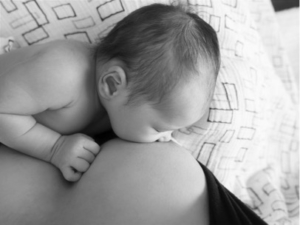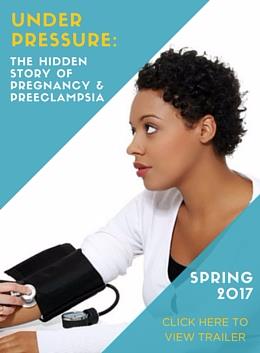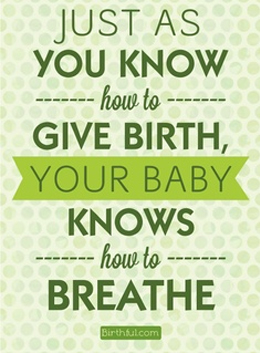SEPTEMBER 6, 2017 3:35 PM

An Instagram photo of a mom named Angela Burzo crying as she breastfeeds recently went viral. “It has been an emotional and painful struggle,” she wrote. Other moms applauded Burzo for reminding us it’s normal not to always love breastfeeding—or any aspect of motherhood, for that matter. But should moms really have to cry their way through nursing, or can pain be avoided? And when does it require medical attention?
Discomfort during breastfeeding is normal, but outright pain is not, says ob-gyn and maternal fetal medicine specialist Kecia Gaither, M.D.Developmental and behavioral pediatrician Eboni Hollier, M.D., agrees. “When your baby has a proper latch, mothers often report that they may feel some discomfort for up to one minute after the baby starts to nurse,” she says. “If pain continues for much longer, there may be some other cause.”
Nipple discomfort is especially common in the beginning, says lactation specialist and Milkies Milk-Saver inventor Helen Anderson, but it usually goes away after a week or two. After that, the skin becomes less sensitive as it adjusts.
If you experience more than mild discomfort for a minute and it continues after two weeks, it’s possible there’s an issue. One of the most common problems is that the baby doesn’t have a deep-enough latch, says Dr. Hollier. If that’s the case, your nipple might look pinched or have a white band around it when you’re done. Try moving the baby away and then back to see if they latch on better the next time.
Another cause of pain during breastfeeding could be engorgement, which happens when your breast doesn’t fully empty, Dr. Hollier adds. Breastfeeding more frequently or using a breast pump to get rid of excess milk can help with this. Mastitis, a mammary glad infection, is also a common culprit. “Signs of mastitis can include sharp or shooting pain during or after breastfeeding, fever, chills, and flulike symptoms,” says Dr. Hollier. Call your doctor if you see these signs, because you may need antibiotics. “Any breast pain in association with fever, lumpy/swollen breasts, reddened breasts, or cracked nipples require medical attention,” says Dr. Gaither.
But discomfort isn’t always the result of a medical problem, Gaither adds. If you have larger nipples or inverted nipples, breastfeeding might naturally be more of a challenge for you. Sometimes the cause is as simple as the fact that the baby’s biting.
If you’ve investigated and dealt with any underlying causes but are still experiencing discomfort, there are a number of at-home remedies you can try. Leslie Elia, a mother of four, says she’d pump in addition to breastfeeding. When she got mastitis and breast infections, she’d drink three cups of marshmallow root tea a day to keep the pain down. She’d also change her son’s position so that the same part of her breast wasn’t always getting worn down. “I remember even lying on the bed and having him nurse upside down so that his feet were lying by my ears,” she says.
Varda Meyers Epstein, a mother of 12 and parenting expert at Kars for Kids, experienced pain for the first six weeks to three months every time she nursed. What got her through was using HPA lanolin cream and vitamin E oil on her breasts, alternating breasts for each feeding (keeping track by putting a safety pin on her bra), getting air and sun on her breasts between feedings, taking painkillers 15 to 20 minutes before feedings (ones that were safe for nursing moms), and expressing or pumping the milk if it didn’t come down on its own.
Mommy blogger Veronika Obeng also experienced pain in the beginning of breastfeeding her five kids, though the pain usually subsided after a week. “During the darkest hours of pain and uncertainty of breastfeeding, I slathered my nipples with Vaseline to keep them moisturized,” she says. “I used warm towels to soothe the aching caused by engorged [breasts].”
Dr. Gaither says these women’s solutions sound reasonable, though there hasn’t been any research on marshmallow root tea, and you should remove Vaseline before breastfeeding. Dr. Hollier also recommends using nipple cream or olive oil on dry or cracked breasts, holding an ice pack or a warm compress over sore breasts, or massaging your breasts during a hot shower. While you’re nursing, pressing down on your breast to help the milk come down can cause the baby to suck with less pressure, which will also alleviate pain, says Anderson.
If these remedies don’t do it and you want to keep breastfeeding, Dr. Hollier recommends going to a lactation consultant. Anderson recommends seeing one regardless of whether breast discomfort lessens after two weeks. And if the pain is severe or accompanied by other symptoms, go to a doctor to investigate a potential underlying problem.






